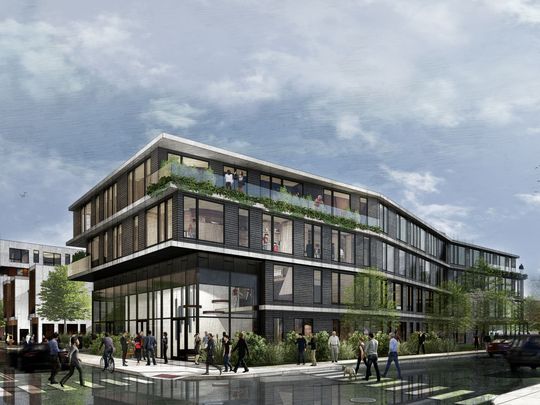Brush Park, one of the oldest historic neighborhoods in Detroit, will see three new development projects come to life by 2024.
The new developments, totaling $102 million, will bring 367 new residential units to the area. Thirty-four percent of them will offer a wide-range of affordability for residents making as low as 30 percent of the Area Median Income, which is about $16,000 a year.

Two of the new projects, Brush House and Brush 8, will be developed by locally-based Growth Partners, led by Moddie Turay and David Howell.
The third project will be developed by Brush + Watson, owned by locally-based American Community Developers Inc., one of Detroit’s affordable housing developers, and development partner Dr. Irvin Reid.
“As Detroit grows, we want to make sure every Detroiter has an opportunity to participate in that growth,” says Mayor Mike Duggan. “That means building truly mixed-income quality, affordable housing in our neighborhoods like Brush Park and ensuring that anyone can live in any neighborhood in Detroit, no matter their income or background.”
The Brush + Watson project will add 180 new residential units to the neighborhood in a $45 million development. American Community Developers (ACD) will set aside 90 units, or 50 percent, as affordable units. Of those units, approximately 45 will be available starting around $1,000 a month to residents making 80 percent of the Area Median Income, or about $42,000 a year.
An additional 45 units will be available to residents making 30-60 percent of the Area Median Income or about $16,000-28,000 a year with rent starting around $400-700 a month. The Area Median Income is set annually by federal housing rules.
The project will also add 8,500 square feet of new street-level retail and 170 underground parking spaces for residents. It is expected to break ground in late 2019 and be completed by 2021.
“We plan to use this mixed-income model in Brush Park as a prototype for creating high-quality housing with rents that people can afford in neighborhoods across the city,” says Mike Essian, vice president of American Community Developers.
OOMBRA Architects is the design team working with ACD on this block.

The other two projects will be developed by Detroit-based City Growth Partners. Under the plan, Brush House, a $52 million mixed-use development with 179 units, and Brush 8, a $5 million residential development, will bring eight new luxury townhomes to the area.
Brush House will feature 36 affordable units, 20 percent of the total units, at 80 percent of the area median income. These units will run about $900 a month for a one-bedroom and be available for residents making $39,000 a year or less.
The development will also include 15,660 square feet of ground floor retail and 127 underground parking spaces.
City Growth Partners expects to break ground on Brush House in fall 2019 and work is expected to be complete by 2021.
Brush 8, a luxury townhome development, will bring eight for-sale units to Brush Park. The $5 million, three-story development is also projected to break ground in fall of 2019.
The three new developments follow hundreds of new residential units under construction or in design in the Brush Park neighborhood. The estimated development pipeline shows that by 2024, Brush Park will have at least 1,800 new residential units with a range of affordable options, more than 100,000 square feet of new retail and commercial space and 10 acres of new public green space.
Of the 1,383 residential rental units in the pipeline, 340 of them, or 24 percent total, are designated at affordable rates between 30 percent and 80 percent of the area median income. The mix includes a third of the affordable units at approximately $900 per month, a third at $700 per month and a third at approximately $500 per month or lower.
In addition, many of the historic mansions and other private developments in the neighborhood have been renovated.
Brush Park was established in 1860. It includes 23 blocks in Midtown, bounded by Mack on the north, Woodward Avenue on the west, Beaubien on the east, and the Fisher freeway on the south. It was part of a long narrow ribbon farm that extended from the Detroit River north along Woodward Avenue, according to the Detroit Historical Society.
The area has seen significant growth over the last five years with hundreds of new units under construction or in design.


